
Consumer Insights
Uncover trends and behaviors shaping consumer choices today
Procurement Insights
Optimize your sourcing strategy with key market data
Industry Stats
Stay ahead with the latest trends and market analysis.
The Expert Market Research report, titled “Potassium Phosphinate Manufacturing Plant Project Report 2026 Edition: Industry Trends, Capital Investment, Price Trends, Manufacturing Process, Raw Materials Requirement, Plant Setup, Operating Cost, and Revenue Statistics,” provides an in-depth and comprehensive examination of the financial and operational aspects of establishing potassium phosphinate plant.
The report is the result of extensive primary and secondary research, offering a detailed analysis of current market trends. It profiles key industry players, giving insights into their market strategies, production capacities, and financial performance, which are crucial for benchmarking and competitive analysis.
It delves into historical, current, and forecasted price trends, helping stakeholders understand market dynamics and price volatility. The report provides a thorough analysis of the mass balance and raw materials requirements, ensuring a clear understanding of the input-output ratios essential for efficient production. Detailed examinations of the various unit operations integral to the potassium phosphinate manufacturing process are included, highlighting process optimisation techniques and technological advancements.
The report presents a comprehensive capital cost analysis, detailing the financial investment required for setting up a potassium phosphinate plant. This includes an exhaustive breakdown of costs associated with raw materials, catchem, utilities, labour, packaging, transportation, land acquisition, construction, and machinery. Additionally, it offers an in-depth look at the operating costs, providing clarity on the recurring expenses involved in running the plant.
Projected profit margins and optimal product pricing strategies are outlined, offering guidance on maximising profitability. The report also addresses regulatory frameworks, environmental impacts, and sustainability measures pertinent to the potassium phosphinate industry.
Potassium phosphinate, also known as potassium phosphonate, is a mixture of mono- and di-potassium salts with fungicidal properties. Historically, phosphonates were first investigated as fertilisers in the 1930s and 1940s due to concerns over phosphate fertiliser disruptions during World War II. However, subsequent studies found phosphonates to be inefficient and costly for supplying phosphorus to plants. Today, it is used to control Pythium and Phytophthora on various crops, including fruit, ornamentals, and vegetables.
Potassium phosphinate is a white, hygroscopic solid that is soluble in water and alcohol. Its molecular formula varies depending upon the specific compound. Monopotassium phosphate Potassium phosphinate decomposes when heated and has a pungent, saline taste. It is produced by the reaction of hypophosphorous acid and potassium carbonate, or by the reaction of potassium hydroxide and phosphorus. It is typically applied at a concentration of 0.5-2.0% active ingredient (AI) and has a half-life in soil of approximately 30-60 days.
Potassium phosphinate is produced through a straightforward manufacturing process. The key step involves combining hypophosphorous acid and potassium hydroxide in a reactor. This reaction causes the two reagents to undergo a chemical transformation, resulting in the formation of potassium phosphinate as the primary product. Once the reaction is complete, the mixture is filtered to isolate the potassium phosphinate. The filtered material is then dried to remove any remaining moisture, ensuring a high-quality, powdery product. Finally, the dried potassium phosphinate is carefully packaged for distribution and sale. This production method avoids the use of potentially hazardous potassium hydroxide and helps minimise environmental pollution.

Read more about this report - REQUEST FREE SAMPLE COPY IN PDF
The process of making potassium phosphinate typically involves the following steps:
1. Raw Materials
The primary raw materials required to produce potassium phosphinate are hypophosphorous acid (H3PO2) and potassium hydroxide (KOH).
2. Reaction
The production of potassium phosphinate involves a neutralisation reaction between hypophosphorous acid and potassium hydroxide.
The chemical equation for this reaction is: H3PO2 + KOH → KH2PO2 + H2O
3. Mixing
In an industrial setup, hypophosphorous acid and potassium hydroxide are mixed in a reactor. The quantities are measured to ensure a stoichiometric balance for complete reaction. The mixture is stirred to facilitate the reaction.
4. Heating
The mixture is heated to around 50-70°C to speed up the reaction. Heating ensures that the potassium hydroxide dissolves completely and reacts with hypophosphorous acid.
5. Crystallisation
Once the reaction is complete, the solution is allowed to cool. As it cools, potassium phosphinate crystals start to form. Crystallisation can be induced by further cooling or by evaporating some of the water from the solution.
6. Filtration
The potassium phosphinate crystals are separated from the liquid by filtration. The crystals are then washed with cold water to remove any impurities or unreacted hypophosphorous acid.
7. Drying
The filtered potassium phosphinate crystals are dried to remove any residual moisture. Drying can be done using a vacuum dryer or a conventional oven.
8. Packaging
After drying, the potassium phosphinate is packaged in suitable containers for storage and transportation.
Potassium phosphinate, also known as potassium phosphonate, is primarily used as a fungicide to control Pythium and Phytophthora diseases in various agricultural crops. It is effective against these oomycete pathogens that can cause significant damage to vegetable or fruit plants. The use of potassium phosphinate has increased in recent years as growers seek alternatives to traditional fungicides, driven by concerns over pesticide resistance and environmental sustainability. For example, potassium phosphinate has been shown to be effective in controlling apple scab and fire blight in apple orchards. Its versatility and low environmental impact make it an attractive option for integrated pest management programs in modern agriculture, thereby driving its demand.
This production cost analysis report by Expert Market Research scrutinises the potassium phosphinate manufacturing process, offering a comprehensive overview necessary for stakeholders considering venturing into this sector. Based on the latest economic data, the report encompasses detailed insights into the primary process flow, raw material requirements, reactions involved, utility costs, operating costs, capital investments, pricing strategies, and profit margins. This report is an indispensable resource for entrepreneurs, investors, researchers, consultants, business strategists, and all those who have any kind of stake in the potassium phosphinate industry. It equips them with essential information and strategic insights to effectively navigate the complexities of the market.
The following sections detail the comprehensive scope of the prefeasibility report for a potassium phosphinate production plant:
This prefeasibility report aims to equip potential investors and existing manufacturers with crucial insights to make informed decisions in the potassium phosphinate industry.




*While we strive to always give you current and accurate information, the numbers depicted on the website are indicative and may differ from the actual numbers in the main report. At Expert Market Research, we aim to bring you the latest insights and trends in the market. Using our analyses and forecasts, stakeholders can understand the market dynamics, navigate challenges, and capitalize on opportunities to make data-driven strategic decisions.*
Get in touch with us for a customized solution tailored to your unique requirements and save upto 35%!
Basic Plan
USD 5,699
USD 4,844
Get Startedtax inclusive*
Raw Material and Product Specification, Raw material consumption, Process flow diagram
Machinery Cost, Working Capital
Utilities consumption, Operating cost, Overheads, Financing Charges, GSA , Packaging
Premium Plan
USD 6,799
USD 5,779
Get Startedtax inclusive*
Key Processing Information, Capital Investment Analysis, Conversion Cost Analysis
Raw material consumption and prices, Utilities consumption breakdown, By-Product Credit, Labour Charges Breakdown
Land and Site Cost, Equipment Cost, Auxiliary Equipment Cost, Contingency, Engineering and Consulting Charges
Enterprise Plan
USD 8,899
USD 7,564
Get Startedtax inclusive*
Key Processing Information, Capital Investment Analysis, Conversion Cost Analysis, Variable Cost Breakdown, Investing Cost Breakdown,
Breakdown of machinery cost by equipment, Auxiliary Equipment Cost, Piping, Electrical, Instrumentation
Cost of Construction, Plant Building, Site Development Charges
Land Cost, Development Charges
Dynamic Spreadsheet (Unlocked)
*Please note that the prices mentioned below are starting prices for each bundle type. Kindly contact our team for further details.*

Basic Plan
USD 5,699
USD 4,844
Key Processing Information
Raw Material and Product Specification, Raw Material Consumption, Process Flow Diagram
Capital Investment Analysis
Machinery Cost, Working Capital
Conversion Cost Analysis
Utilities Consumption, Operating Cost, Overheads, Financing Charges, GSA , Packaging

Premium Plan
USD 6,799
USD 5,779
All Contents of Basic Report
Key Processing Information, Capital Investment Analysis, Conversion Cost Analysis
Variable Cost Breakdown
Raw Material Consumption and Prices, Utilities Consumption, Breakdown By-Product Credit, Labour Charges Breakdown
Investing Cost Breakdown
Land and Site Cost, Equipment Cost, Auxiliary Equipment Cost, Contingency, Engineering and Consulting Charges

Enterprise Plan
USD 8,899
USD 7,564
Includes all Report Content
Key Processing Information, Capital Investment Analysis, Conversion Cost Analysis, Variable Cost Breakdown, Investing Cost Breakdown,
Equipment Cost Breakdown
Breakdown of Machinery Cost By Equipment, Auxiliary Equipment Cost, Piping, Electrical, Instrumentation
Land and Construction Cost Details
Land Cost, Development Charges, Cost of Construction, Plant Building, Site Development Charges
Dynamic Excel Cost Model
Dynamic Spreadsheet (Unlocked)
*Please note that the prices mentioned below are starting prices for each bundle type. Kindly contact our team for further details.*
Flash Bundle
Number of Reports: 3
20%
tax inclusive*
Small Business Bundle
Number of Reports: 5
25%
tax inclusive*
Growth Bundle
Number of Reports: 8
30%
tax inclusive*
Enterprise Bundle
Number of Reports: 10
35%
tax inclusive*
How To Order

Select License Type
Choose the right license for your needs and access rights.

Click on ‘Buy Now’
Add the report to your cart with one click and proceed to register.

Select Mode of Payment
Choose a payment option for a secure checkout. You will be redirected accordingly.
Gain insights to stay ahead and seize opportunities.
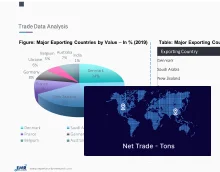
Get insights & trends for a competitive edge.
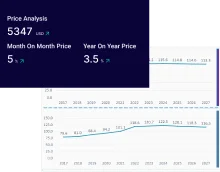
Track prices with detailed trend reports.
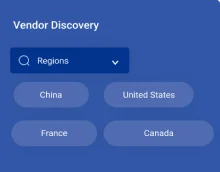
Analyse trade data for supply chain insights.
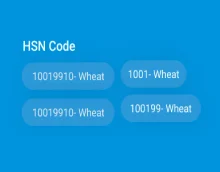
Leverage cost reports for smart savings
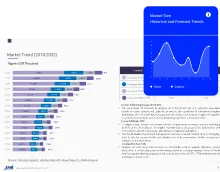
Enhance supply chain with partnerships.
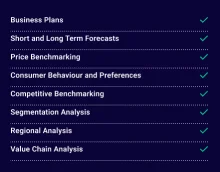
Connect For More Information
Our expert team of analysts will offer full support and resolve any queries regarding the report, before and after the purchase.
Our expert team of analysts will offer full support and resolve any queries regarding the report, before and after the purchase.
We employ meticulous research methods, blending advanced analytics and expert insights to deliver accurate, actionable industry intelligence, staying ahead of competitors.
Our skilled analysts offer unparalleled competitive advantage with detailed insights on current and emerging markets, ensuring your strategic edge.
We offer an in-depth yet simplified presentation of industry insights and analysis to meet your specific requirements effectively.
Share